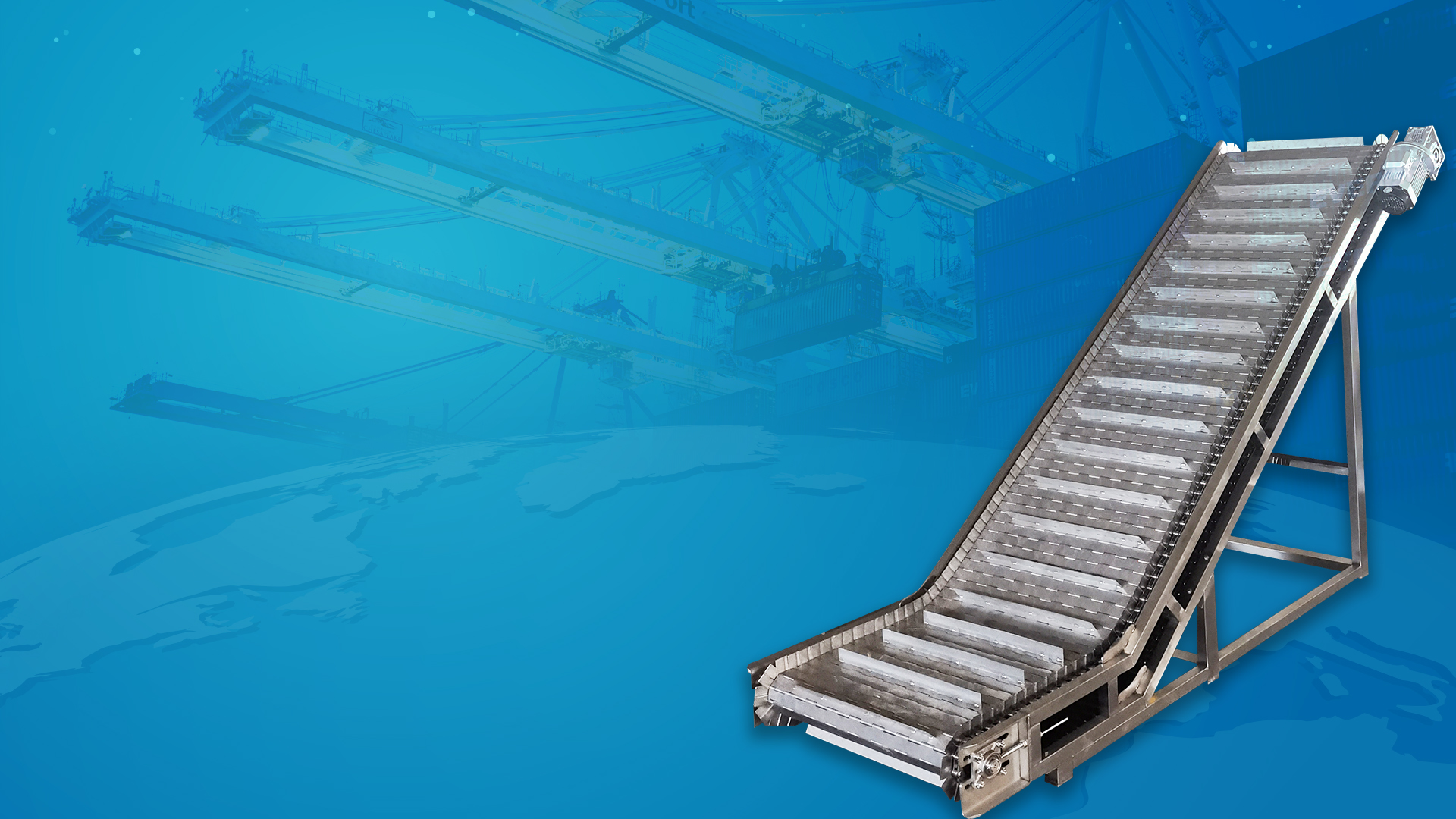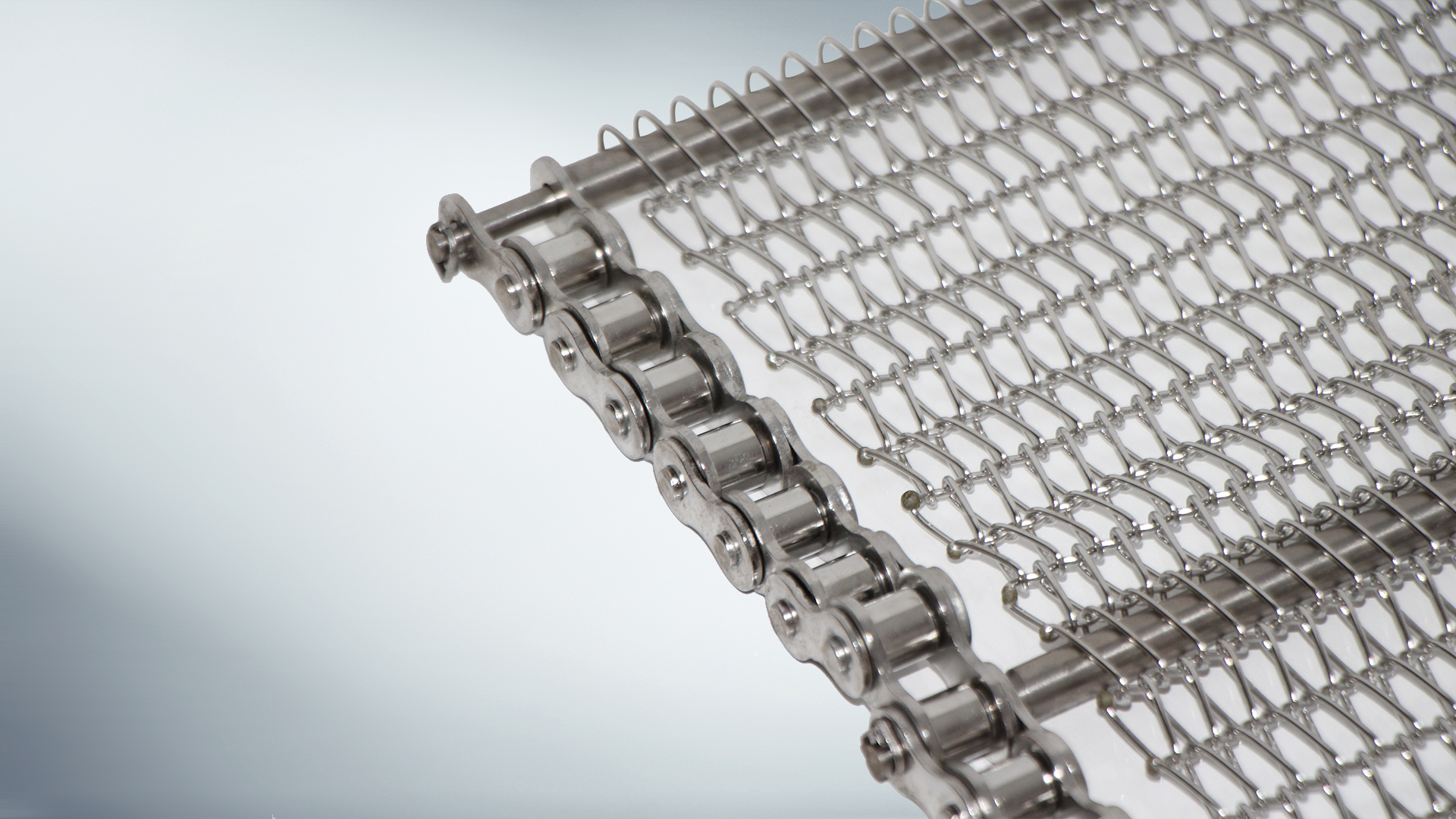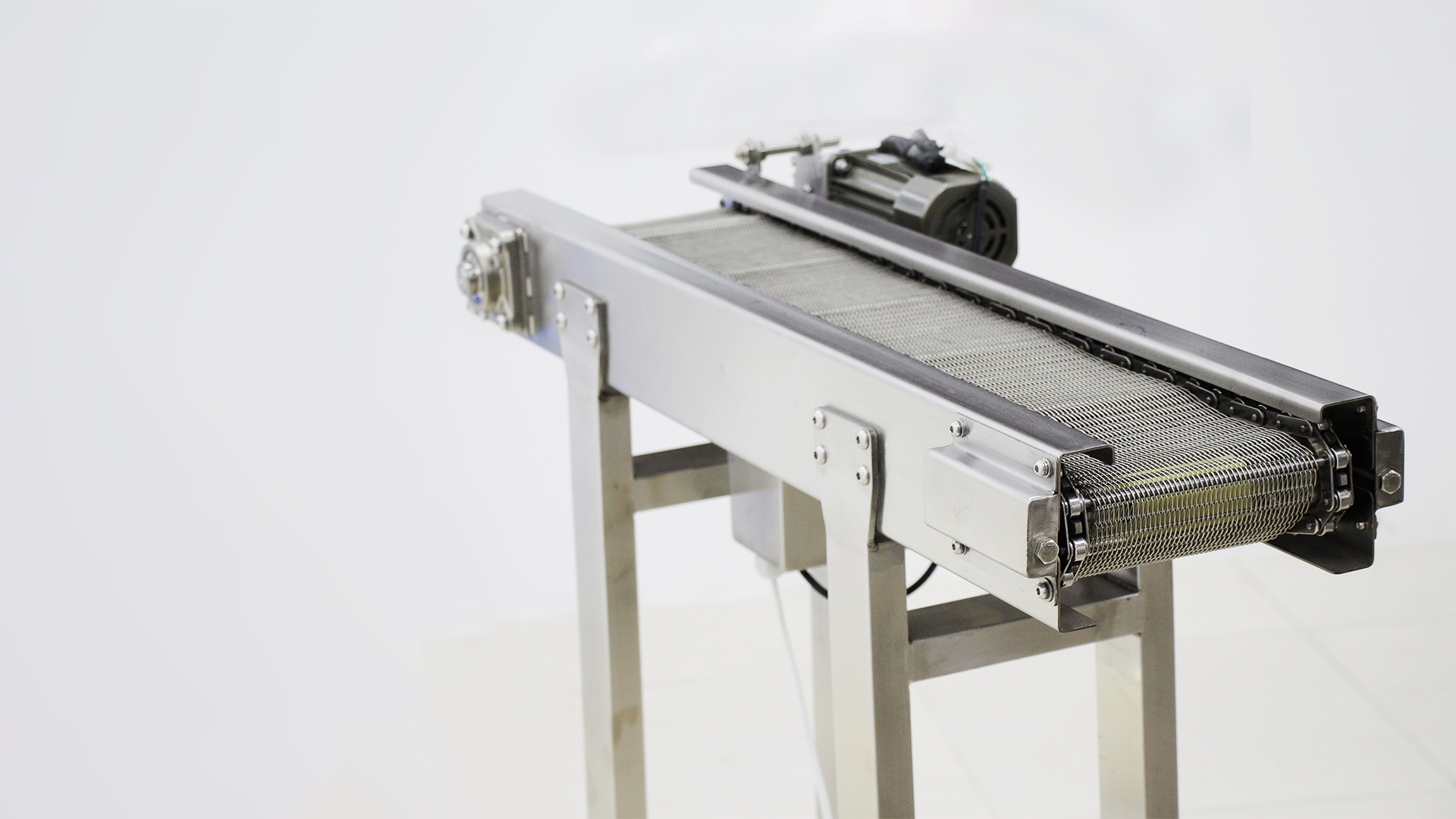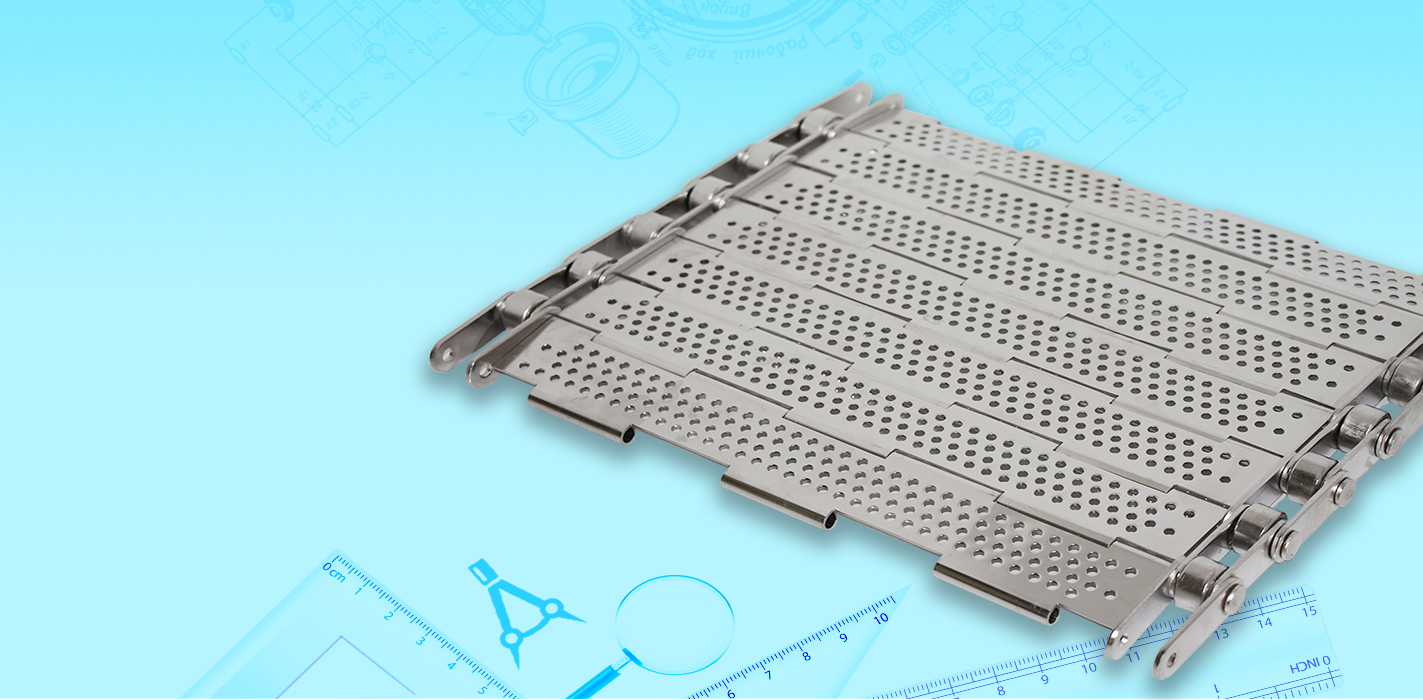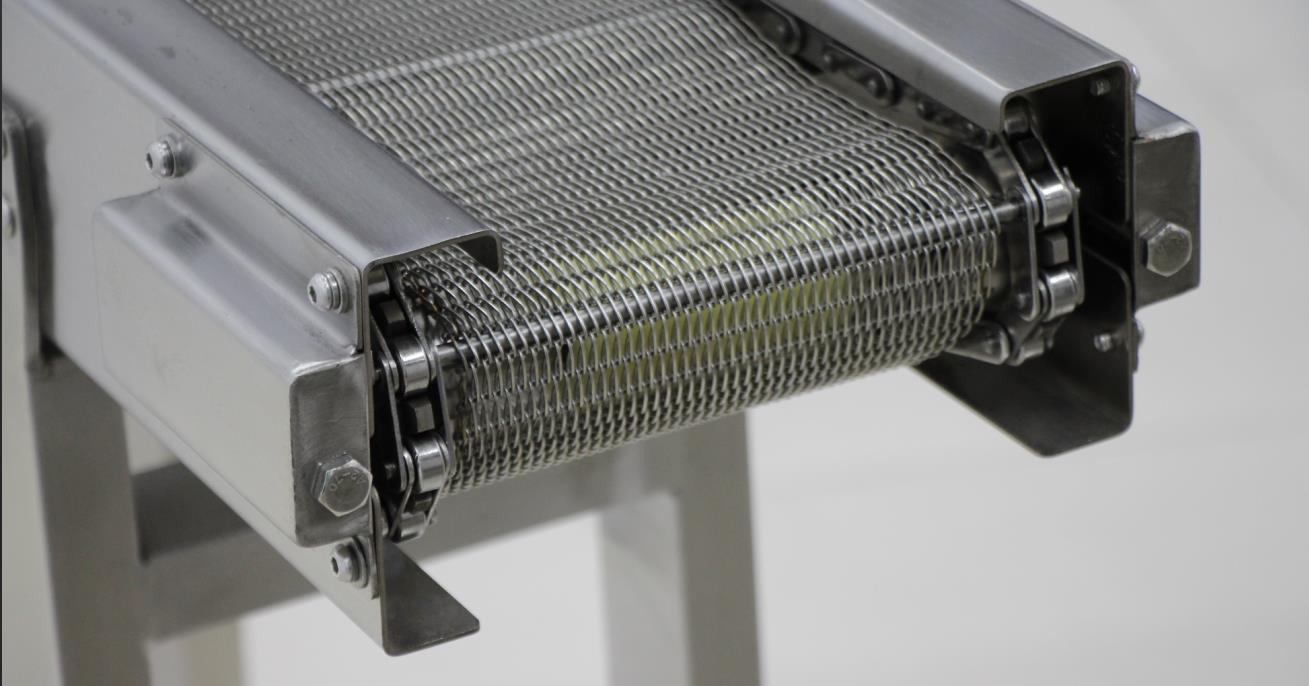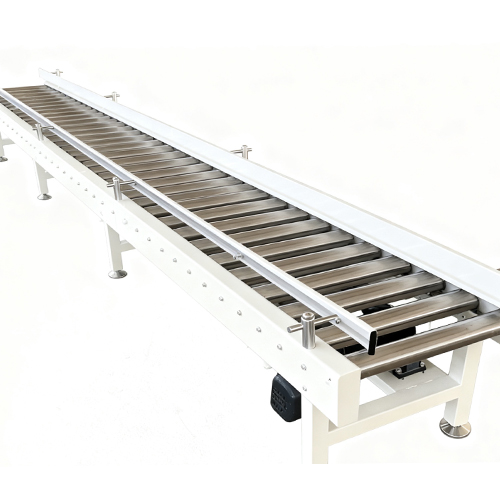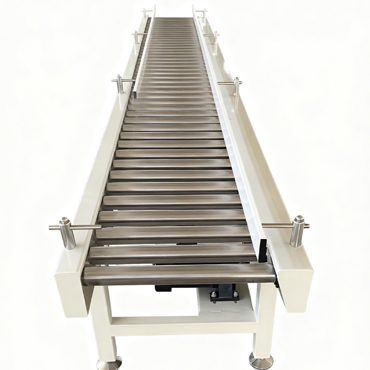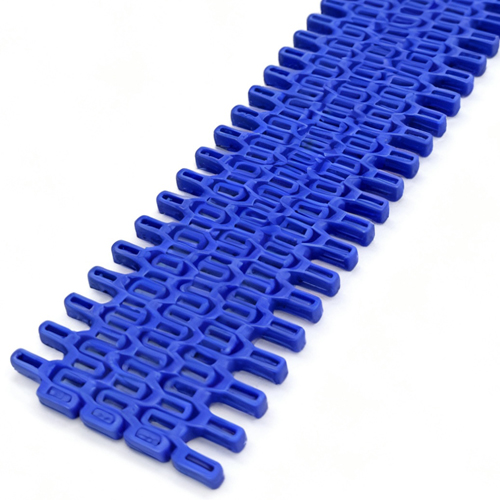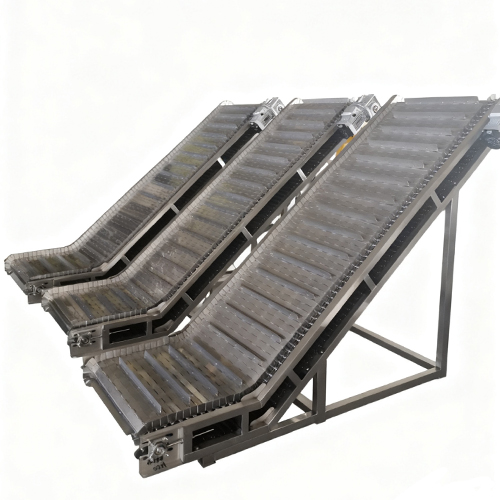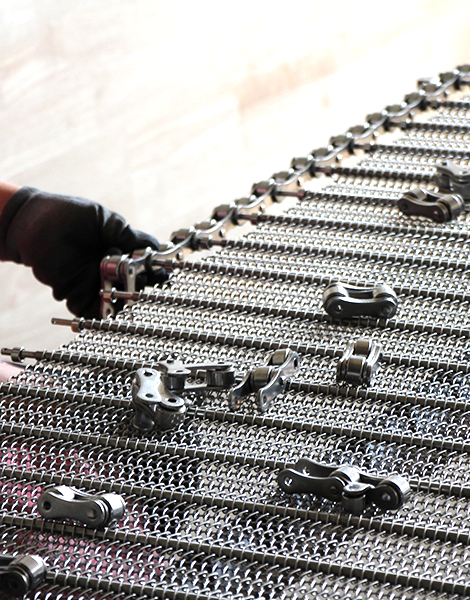The perforation characteristics of perforated chain plate conveyors are reflected in two main aspects.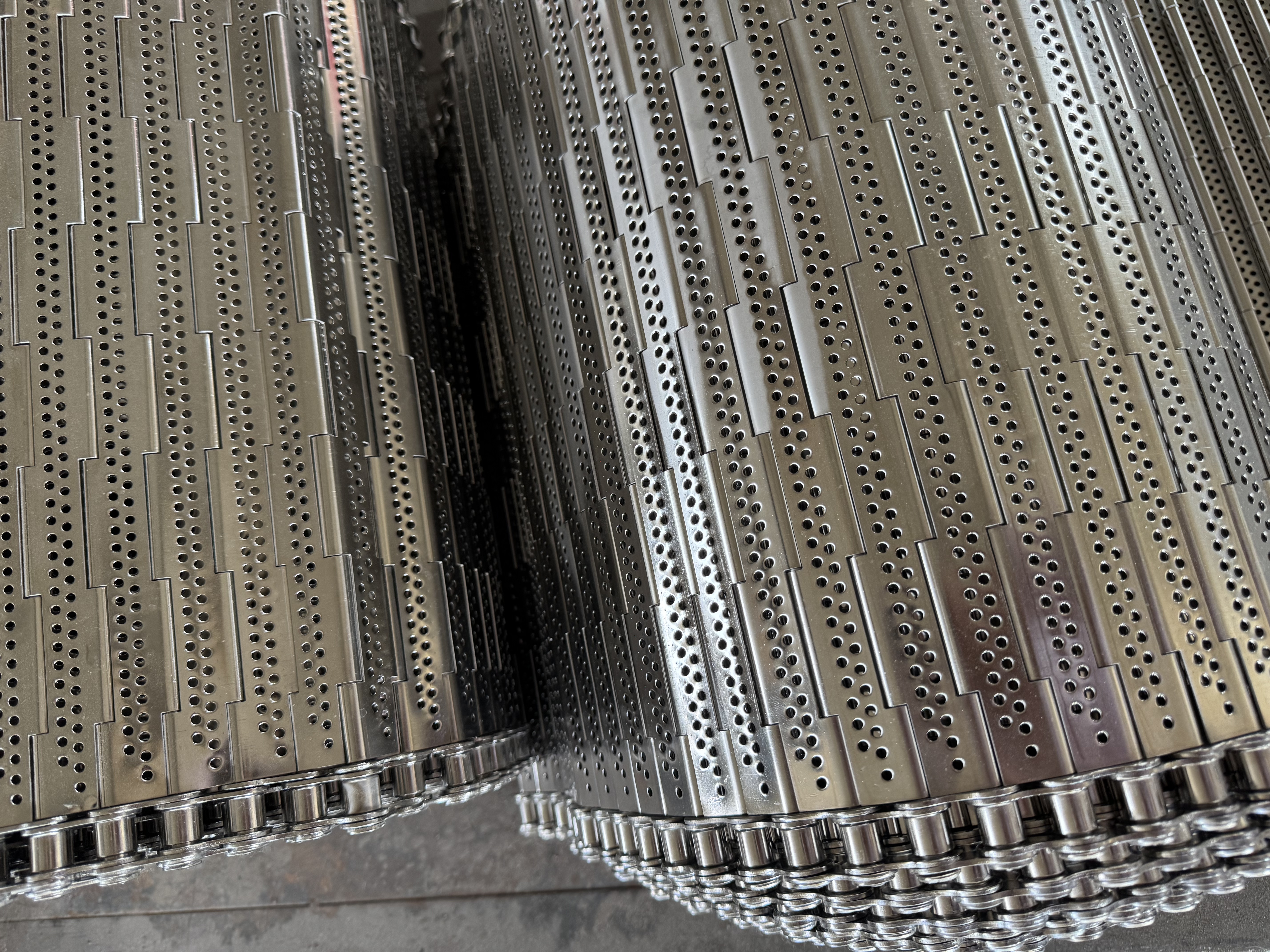
First, they have high perforation precision. Advanced perforation equipment and processes allow for precise control of the size, shape, and spacing of the perforations, ensuring accurate positioning on the chain plate with minimal deviation. This is crucial for material handling scenarios that demand high precision, such as conveying electronic components, as it prevents damage or flow disruptions caused by perforation errors.
Second, the perforations offer versatility. They can be designed in various shapes and specifications, such as circular, square, or rectangular, to accommodate different conveying needs and material properties. Multiple perforation types can be combined on a single chain plate to meet diverse material handling requirements, significantly enhancing the conveyor's adaptability.
Third, the perforations have high strength. Through optimized punching processes and materials, the perforated chain plates maintain sufficient strength and rigidity. They can withstand the weight of materials and external impacts during conveyance without deforming or sustaining damage, ensuring long-term stable operation.
Additionally, the punched holes exhibit consistent quality. Advanced production equipment and stringent quality control systems ensure a stable and reliable punching process, guaranteeing the quality of each chain plate. This reduces maintenance and replacement costs associated with punching defects, thereby enhancing production efficiency and economic benefits.
In summary, the punching characteristics of punched chain plate conveyors enable their extensive application in material handling, meeting diverse conveying demands across various industries and operating conditions.



